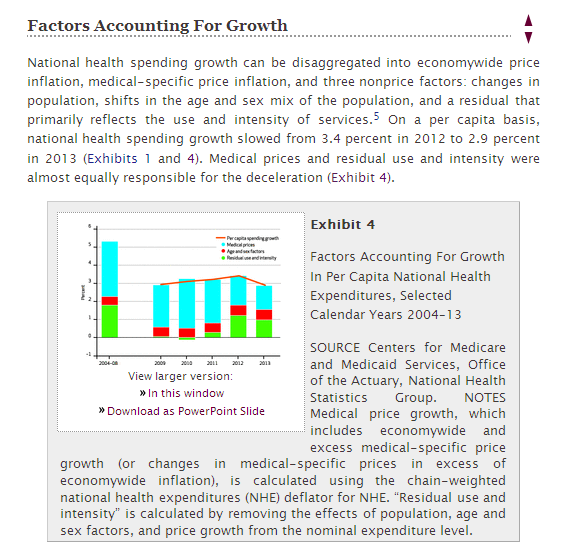Discussion for article #230861
To copy someone else’s reply on the economic numbers,
“I blame Obama”
I am such a fan of this man and so proud to call him my President. His brilliance aside, he is the epitome of the kind of man I would want my daughter (if I had one), to marry. And he is incredibly good looking.
Can someone explain the meaning of “residual use and intensity” in the first chart?
Slow growth is good, but still growth that outstrips anything we’ve seen in general inflation for several years now. It would also make sense that with the overall economy growing, the relative relation of health care in the economy would remain static, as we see in the 1990s… that doesn’t mean no growth, it means that the growth in healthcare is growing at the same rate as the rest of the economy.
Seems to me there’s still a question as to how much of this good news is due to the new law. Also, I’m not sure it’s good when prices go down because usage has gone down. If you haven’t been seeing a doctor for a long time, we should want you to go see a doctor on a regular basis.
Article doesn’t answer the relevant question: does any of this mean that people are healthier, have more access to actually usable medical services, are less likely to go bankrupt because of disease or injury? I don’t care about the health of statistics – I care about the health of people. And that’s the question that needs to be answered about the ACA.
I Hope this helps…
“Residual use and intensity is calculated by removing the effects of population, age-sex factors, and price growth from the nominal expenditure level.”
See: http://content.healthaffairs.org/content/early/2014/11/25/hlthaff.2014.1107.full#F2
~OGD~

